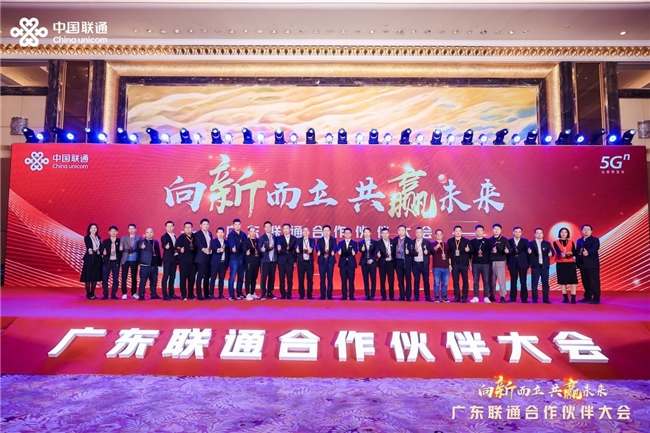Praise the New Era and New Journey 礼赞新时代专题活动 Foreign Experts in Sichuan Investigations
2024-08-27 09:26:49 中国晨报
By Somrak Chaisingkananont
During my first visit to Chengdu, Sichuan Province, China, from July 26-31, I had the opportunity to explore the rich tapestry of Bashu culture and experience the various historical and cultural aspects of the province's development. Assoc.prof. Zirong Song, Zijun Shen, Wen Song, Yunyi Chen and Zijun Shen’s research team from the Department of Foreign Languages at Sichuan University of Media and Communications guided me on visits to the archaeological sites of Jinsha and the Sanxingdui Museum. Through these visits, I gained a deeper understanding of the ancient kingdom of Shu 蜀, the origin of Bashu culture.
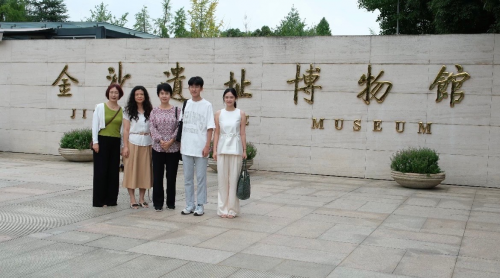
Recent archaeological discoveries at Sanxingdui and Jinsha, thought to be sites of Shu culture, indicate the presence of a unique civilization in this region before the Qin conquest in 316 BCE. Although I had read articles about the excavation of numerous masks made from both gold and bronze, I was stunned when I saw the vast number of actual artifacts, including pottery, jade, bronze weapons, the Golden Sun Bird made of gold leaf, kneeling stone figures, human skeletons in burial graves, diverse types of bronze masks, gold artifacts, and the huge bronze tree with nine birds. The Golden Sun Bird motif is used by the city of Chengdu as a logo to represent China's cultural heritage. The Sanxingdui and Jinsha ruins provide evidence of a large-scale civilization that confirms the multicultural history of Chinese civilization.
Another noteworthy observation is that Chinese students and adult tourists lined up to buy tickets to both museums. The research team mentioned that, due to the summer break and the domestic tourism promotion policy, many people came to visit and learn about the history of Chinese civilization. A significant aspect of Xi Jinping's cultural policy is the promotion of 'cultural confidence,' which involves fostering a sense of pride and identity in China’s rich cultural heritage. The crowded tourists at the two museum sites reflect that President Xi Jinping's emphasis on the protection of cultural relics and cultural heritage, as well as his appreciation for the charm of Chinese culture, has been well received by the Chinese people.
In addition, I think Thai tourists are not very familiar with these two museums. Most visitors to Chengdu focus on beautiful natural attractions, ancient cities, and shopping districts. Including these two museums in tour company programs would help foreign tourists appreciate the grandeur of this unique ancient civilization.
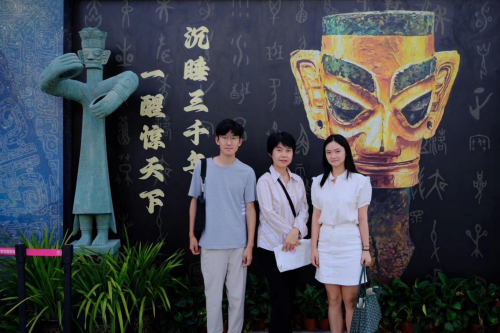
Protecting and preserving over 17,000 cultural relics uncovered from the Sanxingdui Site is a very challenging task. When I visited the exhibition Craftsmanship and Ingenuity: Showcase of Preservation and Restoration Achievements of Newly Excavated Cultural Relics from the Sanxingdui Site, I learned about the splendid work involved in the collaborative working model of 'multi-team cooperation.' The Sichuan Provincial Cultural Relics and Archaeology Research Institute and the Sanxingdui Museum have partnered with 16 cultural heritage research institutions, sharing resources and interconnecting technologies to conduct a series of preservation, restoration, and research projects. Importantly, they discovered traces of decayed silk that date back more than 3,000 years. This is evidence that this ancient civilization was connected to the ancient Silk Road.
The intersection of tradition and innovation is evident in Sichuan's approach to cultural preservation. Modern technology is employed to document and study cultural heritage, utilizing digital tools to create virtual archives and interactive exhibits. This integration of science and technology ensures that Bashu culture is preserved for future generations while adapting to contemporary methods of knowledge dissemination.
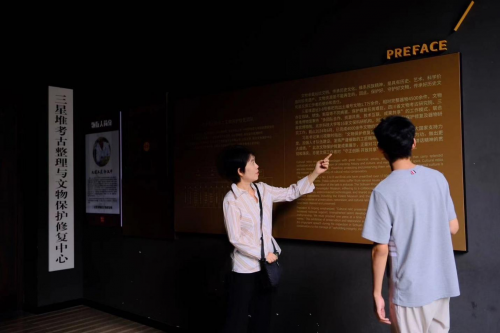
My research interest on Bashu culture focuses on the transmission of intangible cultural heritage, with particular attention to the traditional craftsmanship like Shu Brocade and Embroidery, which highlight the cultural richness of Sichuan. The Bashu research team facilitated my visit to the Chengdu Shu Brocade and Embroidery Museum, where I observed an exhibition that showcased the complex looms used for weaving the intricate patterns of Shu brocade. The exhibition noted that four models of Shu brocade looms were unearthed from a tomb in Chengdu and later reconstructed for a textile factory during the Han Dynasty. Throughout China's dynastic history, Shu brocade and embroidery were initially developed to fulfill the demands of the royal family and nobility. Research into the traditional diverse patterns of Shu brocade and embroidery has led to the development of new, refined artistic patterns, enhanced by innovative technology and artistic creativity. The gallery's display of intricate embroidery stitches and the unique techniques created by master artisans left a lasting impression on me, particularly the vibrant and breathtaking dual-sided embroidery artworks.
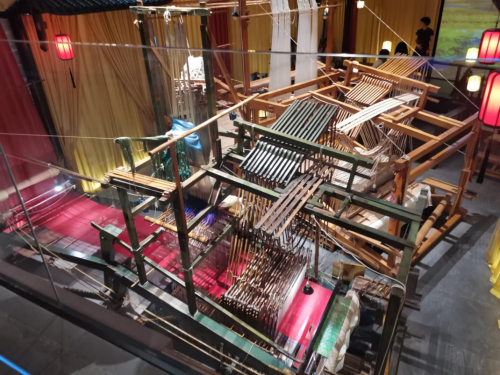
During my visit, I observed young female embroiderers meticulously weaving brightly colored threads to create intricate patterns, including the minute details in depictions of pandas. The precision of their stitches reflects their dedication and focused effort. In an informal interview, one embroiderer shared that her interest in this cultural heritage began in high school, leading her to become an apprentice in Shu embroidery. She receives a salary while learning and practicing the craft under the guidance of a master, with her smaller embroidery works being sold to tourists. These crafts not only serve as cultural symbols but also attract tourists, generating substantial revenue and creating job opportunities.
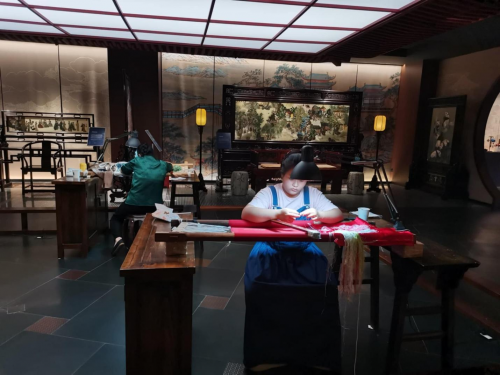
Shu embroidery faces significant challenges in terms of inheritance and sustainability due to its time-consuming and costly creation process, which makes it much more expensive than contemporary products. In response, the government has implemented measures to safeguard this valuable intangible cultural heritage. Recognizing the importance of transmitting these traditional crafts, Sichuan has integrated Bashu culture into its educational framework, highlighting its significance in both academic and extracurricular activities. Schools and universities now offer specialized programs in traditional arts and crafts, ensuring that younger generations gain the necessary knowledge and skills to preserve their cultural heritage.
Drawing from my experience studying the preservation and transmission of Thai intangible cultural heritage, I have observed that attracting the younger generation to appreciate and inherit this heritage requires substantial support. Government, institutions, or non-governmental organizations should assist cultural heritage transmitters in earning a living, enabling them to devote time to learning, practicing, and refining their cultural skills. Unfortunately, Thai government agencies lack the budget for such comprehensive support. Their efforts are primarily focused on finding markets for products and giving awards to national artists or local wisdom teachers. Consequently, the number of Thai inheritors of intangible cultural heritage is declining, putting many forms of this heritage at risk.
In contrast, the Chinese government's proactive approach in developing human resources and employing inheritors of intangible cultural heritage is commendable, as mastering such heritage is a lengthy process that requires years of dedication before one can create unique works. Additionally, cultural centers and museums dedicated to Bashu heritage serve as educational hubs, fostering social inclusivity and cultural appreciation.
According to Xi Jinping’s policies, the Chinese government provides substantial support to local governments and institutions in Sichuan for the preservation and promotion of local cultures. This support includes funding, resources, and policy backing for initiatives aimed at preserving Bashu culture, as well as fostering local innovation and cultural development projects. Further research into these policies could reveal their impact on Bashu culture in a modern context, particularly regarding how they influence both the cultural richness and economic development of Sichuan.
Finally, I would like to express my sincere gratitude to Zijun Shen and his research team from the Department of Foreign Languages at Sichuan University of Media and Communications and Foreign Experts Bureau of Sichuan for their invitation and warm hospitality throughout this trip. The program provided an invaluable opportunity for foreign scholars like me to explore Bashu culture, conduct on-site observations, and promote Bashu culture on an international scale. This marks the beginning of what I hope will be fruitful research collaboration and academic exchanges.
In summary, my experiences in Chengdu offered a comprehensive understanding of Bashu culture, China’s developmental trajectory, and its global initiatives. China’s historical depth, combined with its contemporary strategies, demonstrates a dynamic approach to growth and international engagement. The principles of mutual learning among civilizations, the "Belt and Road" initiative, and the vision of a shared future reflect China’s commitment to positively contributing to global development and fostering a more interconnected world.(沈子俊,陈昀怡,宋自容,宋雯,Somrak Chaisingnanomont)













